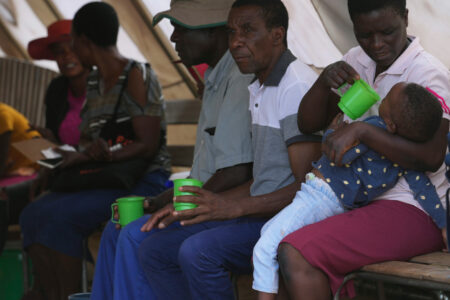
COVID-19 has undeniably disrupted the schooling of children throughout the world. According to UNESCO, most governments took the dramatic step of temporarily shuttering schools in their efforts to contain the spread of the virus, closures that impacted over 60 percent of the world’s student population. In March, provincial and territorial governments across Canada sealed schools, and educators scrambled to cobble together options for remote learning. While results varied, there is no denying that the 2019-20 school year was thrown into utter chaos, and many Canadian students lost significant learning opportunities and have fallen behind.
Reopening schools in the fall is fraught with challenges. First and foremost, COVID-19 is an insidious virus that we are only just beginning to understand. Airborne and virulent, with dramatic and deadly consequences for many who become infected, it is the most critical public health challenge that we have faced in 100 years. Schools have had outbreaks of other diseases in the past, and there are real concerns that unsafe measures will put many people’s lives at risk. Effective policy choices — for both schools and the broader communities within which they are located — must be made to limit community transmission and ensure the safety of children and youth, those working within schools and their families, while finding a way to provide quality education for all.
Adding further complexity to the reopening of schools is the fact that the elementary and secondary education sector in Canada is managed, overseen and financed almost exclusively by provincial and territorial governments. Unlike virtually every other federation, Canada has no “national” department of education or overarching legislation to ensure that all students receive comparable schooling programs. Instead, incrementally over decades, the provinces and territories gradually established relatively comparable systems of public schooling through learning and emulation. The 13 systems that operate side by side have garnered considerable acclaim over the past two decades. Schools are far from perfect, with historic and ongoing problems including oppression, discrimination, abuse and injustice. But they have also recorded considerable success. Every time the OECD releases results from its Programme for International Student Assessment, Canada scores in the top 10 of participating countries while also receiving high marks in the OECD’s measures of equity. These are results that should be strengthened, reinforced and expanded upon for all to realize, and not squandered or compromised by short-sighted decisions.
Provinces and territories are currently issuing their plans to reopen schools. Some — such as the three northern territories and Nova Scotia — have made a clear commitment to full in-person learning in the fall. Others, however, are failing to pay sufficient attention to public health directives, are giving little consideration to the rights of children and youth and are missing the opportunity to capitalize on our potential strengths to devise better responses and revolutionize schooling in the country.
In regard to public health directives, consider Alberta and Ontario. While both provinces have indicated that schools are to open in the fall, they are not reducing class sizes in elementary schools, will not specifically cohort groups of students and have not indicated how they will increase the availability of rapid COVID-19 testing when schooling recommences. Ontario Premier Doug Ford even said in a press conference on August 4: “Parents that are nervous, I understand…We have some of the most stringent rules in the entire country…But [parents who are nervous] don’t have to put their kids in school. They can keep them home and do online learning.” Falling back on online or remote learning as a backstop, to avoid making further investments in schools and reducing class sizes to a safer and more manageable level, both puts public health at risk and undermines the rights of children and youth to quality education.
Schools fulfill many functions. Much has been written about the devastating economic consequences faced by parents who suddenly needed to home-school children while attempting to work. The economic impact is a leading rationale that is driving the effort to get children back into the classroom. But focusing only on such arguments ignores and sidelines the deeper purposes of public schools. As Anne Levesque of the University of Ottawa recently wrote, children and youth are human beings with rights, and we have a legal obligation to offer quality education. For individual students, schools are supposed to provide a safe, secure and stable learning environment, where knowledge, skills and competencies are nurtured by professional educators. Schools are also a place where children and adolescents learn to work with each other, developing key socialization skills such as cooperation, problem solving and conflict resolution. As public institutions, free and accessible to all, schools also offer a chance to somewhat equalize learning opportunities, counterbalancing the numerous factors that deepen inequality in a population.
Current plans issued by certain provinces are setting out to compromise these features of public schooling. Consider again the idea that remote learning supplements in-person learning. Ontario’s plan, for example, indicates that every second day, secondary students will learn remotely, meaning from some sort of device, somewhere.
In a world of remote learning, students need access to their own individual devices at all times.
To begin with, this plan does not acknowledge at all the fact that adolescents need in-person learning as much as children. It is conceding the rights of adolescents to in-person schooling as a trade-off because they can be unsupervised, allowing parents of teenagers to return to work.
From a logistical perspective, moreover, these plans fail to take into account three key issues.
First, internet connectivity. Only 1.2 percent of households with children have no access to the internet at home, according to Statistics Canada. However, that figure does not indicate the quality of households’ access; it includes all types of connections. Students who need to stream videos or participate in online forums through such platforms as Teams or Zoom need high-speed internet with massive data availability.
Second, device availability. Statistics Canada reports that 58.4 percent of households with internet access have fewer than one device per household member. In a world of remote learning, students need access to their own individual devices at all times.
Third, plans that count on online learning seem to rest on an assumption that teachers can simply and seamlessly start teaching remotely with little advance preparation or training to deliver materials through an online format. Nothing is farther from the truth, as our experiences during the rapid shutdown have demonstrated. Current teachers need substantive opportunities for professional development to build the skills and competencies that are necessary to deliver curriculum through online platforms. Both supplemental hotspots and additional devices, such as iPads or Surface Book laptops, will need to be distributed to assure that all students have access to the necessary materials to receive quality remote learning. Contending with these critical issues, however, has been left in the hands of individual school boards, which have varying capacities to meet these challenges. Consequently, the door is wide open for inequalities in educational outcomes to take hold for an entire generation of children and youth in Canada.
“We are all in this together” is the catchphrase of the pandemic. Reopening schools is not an individual responsibility but a collective effort that requires an exceptional pooling of resources and coordination. Throughout the pandemic, the Council of Ministers of Education, Canada — the body that enables information exchanges and voluntary collaboration among the jurisdictions — has been silent. Within provinces and territories, engagement of multiple stakeholders such as teachers’ associations, principals’ associations, faculties of education and even colleges and universities has been minimal. This needs to change. In countries that have recorded success in reopening schools and rethinking education, stakeholders have worked hard to collaborate to ensure a smooth transition. It is never too late to start down a new path. Governments across the country need to meet these challenges and invest the necessary time and effort to successfully reopen schools and provide quality education for Canadian children and youth.
This article is part of the The Coronavirus Pandemic: Canada’s Response special feature.
Photo: Shutterstock.com, by BlurryMe









